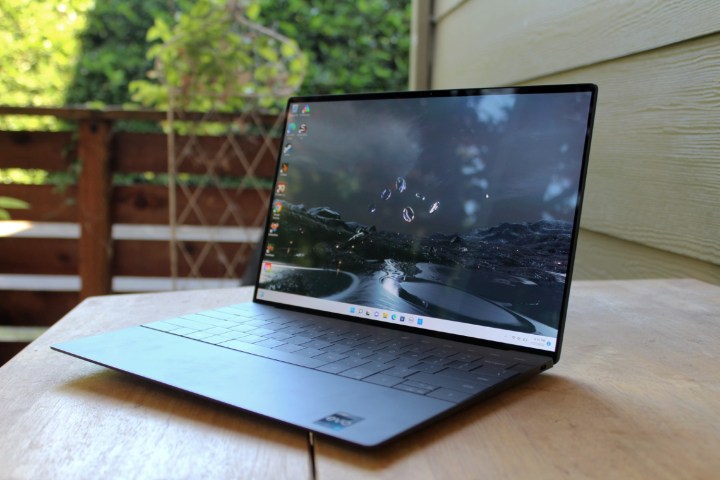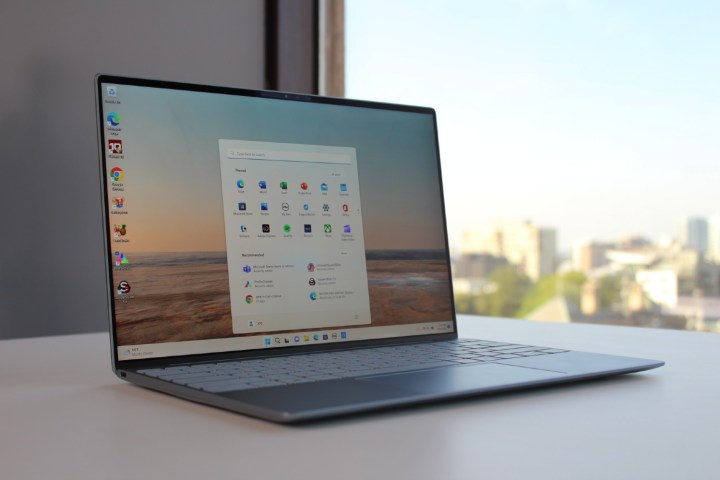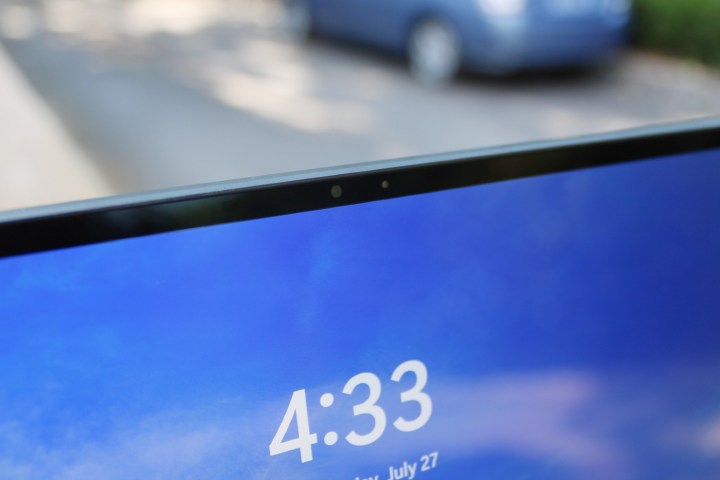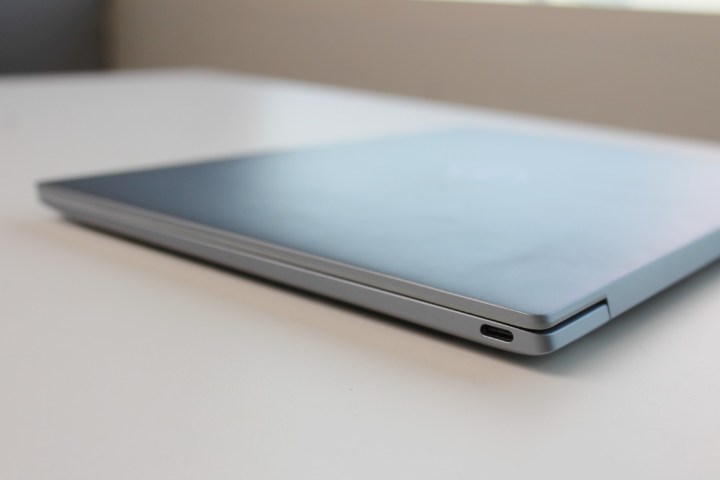The Dell XPS 13 has been at the top of our best laptops list for several years now, and for good reason. It’s been an extremely well-built and well-designed machine that epitomizes the 13-inch laptop.
For 2022, Dell split the iconic machine into two versions. There’s now a “base” XPS 13 9315 that drops the carbon or glass fiber palm rest and features a more economical configuration. Then there’s the XPS 13 Plus, which is also all-metal and incorporates several innovations in a faster and more expensive model. That’s why we’re looking at the XPS 13 Plus and comparing it to the XPS 13 9315 to see which laptop takes its place at the top.
Specs
| Dell XPS 13 9315 | Dell XPS 13 Plus | |
| Dimensions | 11.63 inches by 7.86 inches by 0.55 inches | 11.63 inches by 7.84 inches by 0.60 inches |
| Weight | 2.59 pounds | 2.73 pounds |
| Processor | Intel Core i5-1230U Intel Core i7-1250U |
Intel Core i5-1240P Intel Core i7-1260P Intel Core i7-1270P Intel Core i7-1280P |
| Graphics | Intel Iris Xe | Intel Iris Xe graphics |
| RAM | 8GB LPDDR5 16GB LPDDR5 32GB LPDDR5 |
8GB LPDDR5 16GB LPDDR5 32GB LPDDR5 |
| Display | 13.4-inch 16:10 Full HD+ (1920 x 1080) IPS non-touch 13.4-inch 16:10 Full HD+ IPS touch |
13.4-inch 16:10 IPS Full HD+ (1920 x 1200) 13.4-inch 16:10 OLED 3.5K (3456 x 2160) touch 13.4-inch 16:10 IPS UHD+ (3840 x 2400) touch |
| Storage | 512GB PCIe 4.0 solid-state drive 1TB PCIe 4.0 SSD |
512GB SSD 1TB SSD 2GB SSD 4TB SSD 8TB SSD |
| Touch | Optional | Optional |
| Ports | 2 USB-C with Thunderbolt 4 | 2 USB-C with Thunderbolt 4 |
| Wireless | Wi-Fi 6E and Bluetooth 5.2 | Wi-Fi 6E and Bluetooth 5.2 |
| Webcam | 720p with Windows 11 Hello infrared camera | 720p, Windows Hello IR webcam |
| Operating system | Windows 11 | Windows 11 Home or Pro |
| Battery | 51 watt-hours | 55 watt-hours |
| Price | $999+ | $1,299+ |
| Rating | 4 out of 5 stars | 4 out of 5 stars |
Pricing and configurations
The XPS 13 9315 is the more economical of the two, starting at $999 for a Core i5-1230U, 8GB of RAM, a 512GB SSD, and the Full HD+ non-touch display. The most you’ll spend is $1,599 for a Core i7-1250U, 32GB of RAM, a 1TB SSD, and a touch display. It’s affordable at the low end and distinctly premium at the high end.
The XPS 13 Plus is a more expensive machine, starting at $1,299 for a Core i5-1240P, 8GB of RAM, a 512GB SSD, and a non-touch Full HD+ display. At the high end, the XPS 13 Plus is costly at $2,399 for a Core i7-1280P, 32GB of RAM, a 2TB SSD, and either a 3.5K OLED display or a UHD+ IPS panel.
Design

The XPS 13 9315 design retains the basic form of its predecessor but is now an all-aluminum laptop in Sky and Umber color schemes. With its incredibly tiny bezels and clean lines, it’s a very modern machine, even if it no longer stands out quite so starkly. The build quality remains as good as it gets, with zero bending, flexing, or twisting.
The XPS 13 Plus looks eerily similar from the outside, with the same aluminum build albeit with more conservative Platinum and Graphite colors. But open it up, and it couldn’t be more different. First, as with the base XPS 13, there’s no longer any fiber in the keyboard deck — it’s now all aluminum, losing that warmth enjoyed by the older XPS 13. It’s a bolder look than the new XPS 13, though, thanks to an edge-to-edge keyboard and a glass-covered palm rest that hides the touchpad. It, too, maintains the usual XPS build quality.
The XPS 13 Plus keyboard is markedly different as well, no longer simple chiclet keycaps as with the XPS 13 but rather a flatter, edge-to-edge design that offers less key spacing but larger keycaps. It’s a great typing experience, closer in overall feel to Apple’s excellent Magic Keyboard, and it’s a more precise experience than the XPS 13’s also excellent keyboard.

Even more striking is the lack of physical function keys on the XPS 13 Plus, with LED-backlit touch buttons without haptic feedback — it’s a strange choice that we found lacked the kind of responsiveness that would have made them more comfortable to use. We’re not sure that the touch keys improve over the physical keys on the XPS 13, and it seems to us that Dell is emulating Apple’s Touch Bar, which was abandoned on the most recent MacBooks.
The touchpad is also brand new, disappearing entirely and incorporating a haptic mechanism that works well. The XPS 13’s physical touchpad is great for a traditional model, but it lacks the XPS 13 Plus touchpad’s precision. Overall, the keyboard and touchpad combine to give the interior of the XPS 13 Plus a different and more minimalist design. Whether it’s better or not is more a question of personal taste.
The XPS 13 and XPS 13 Plus both have limited connectivity, with just two USB-C ports with Thunderbolt 4 support. Dell made the controversial decision to remove the audio jack and the microSD card reader on both laptops. Wireless connectivity is up to date on both, with Wi-Fi 6E and Bluetooth 5.2.
Finally, Dell remains behind the curve with the XPS 13 and XPS 13 Plus with HD (720p) webcams, while the premium laptop market is migrating to at least 1080p. At the same time, the four speakers on the Plus model provide enhanced audio over the XPS 13’s two speakers.
Performance

The XPS 13 9315 uses 9-watt Intel 12th-generation CPUs, specifically the 10-core (two Performance and eight Efficient), 12-thread Core i5-1230U and Core i7-1250U. As such, the laptop promises a mix of solid productivity performance and enhanced efficiency. The XPS 13 Plus utilizes one of several 12th-gen Intel CPUs, from the Core i5-1240P up to the Core i7-1280P. These are 28-watt, 12-core (four Performance and eight Efficient), 16-thread chips and should be significantly faster.
Dell also improved airflow in the XPS 13 Plus, up to 55%, meaning that the new processors should have a higher performance ceiling. Finally, the XPS 13 Plus can be configured with up to 64GB of faster LPDDR 5 RAM and up to 8TB of PCIe Gen 4 SSD storage.
In our benchmarks, the XPS 13 Plus was definitely faster, particularly in the most CPU-intensive multi-core tests. Both laptops benefited from Dell’s thermal tuning utility, demonstrating faster speeds in performance mode.
| Dell XPS 13 9315 (Core i5-1230U) |
Dell XPS 13 Plus (Core i7-1280P) |
|
| Geekbench 5 (single / multi) |
Bal: 1,393/ 4,459 Perf: 1,477 / 5,350 |
Bal: 1,316 / 8,207 Perf: N/A |
| Handbrake (seconds) |
Bal: 333 Perf: 192 |
Bal: 170 Perf: 94 |
| Cinebench R23 (single / multi) |
Bal: 1,379 / 3,457 Perf: N/A |
Bal: 1,311/ 6,308 Perf: 1,650 / 7,530 |
| PCMark 10 Complete (higher is better) |
4,023 | 4,309 |
Display

Like with performance, Dell differentiates between the XPS 13 and XPS 13 Plus by the quality of displays it offers. The XPS 13 9315 is limited to touch and non-touch Full HD+ IPS, and the higher-resolution and OLED options are now reserved for the XPS 13 Plus.
We reviewed the latter with the 3.5K OLED display, and it’s stunning, as always. The XPS 13’s display is fine for productivity work, but for creative tasks and media consumption, you can’t beat OLED with its incredibly wide and accurate colors and inky blacks.
| Dell XPS 13 9315 (IPS) |
Dell XPS 13 Plus (OLED) |
|
| Brightness (nits) |
444 | 386 |
| AdobeRGB gamut | 75% | 99% |
| sRGB gamut | 99% | 100% |
| Accuracy (DeltaE, lower is better) |
1.33 | 0.83 |
| Contrast ratio | 1,390:1 | 386,030:1 |
Portability

The XPS 13 Plus is almost the same size as the XPS 13, coming in at 11.63 inches by 7.84 inches by 0.60 inches, compared to the XPS 13 at 11.63 inches by 7.86 inches by 0.55 inches. That makes the XPS 13 Plus slightly thicker than the XPS 13 but still quite thin. The XPS 13 Plus is heavier at 2.73 pounds versus 2.59 pounds. Both laptops are tiny, thanks to their minimal display bezels, and both will slip into a backpack and be barely noticeable.
While the XPS 13 Plus has a slightly larger battery at 55 watt-hours compared to 51 watt-hours in the XPS 13, the latter has more efficient CPUs and lower-power displays. Unsurprisingly, it also had a significantly longer battery life. For example, it lasted 13.25 hours in our web browsing test compared to the XPS 13 Plus at eight hours. You’re much more likely to get all-day longevity out of the XPS 13.
Go fast or save money — either way is fine
Both the XPS 13 and XPS 13 Plus are excellent premium 13-inch laptops. You get good enough productivity performance and solid battery life at less money with the XPS 13 9315, while the XPS 13 Plus is more futuristic and faster with a price to match.
Which is the better laptop? That’s hard to say. Most likely, your choice between the two will come down to whether you want the haptic touchpad, edge-to-edge keyboard, and touch function keys or whether the XPS 13’s more traditional design appeals to you.


